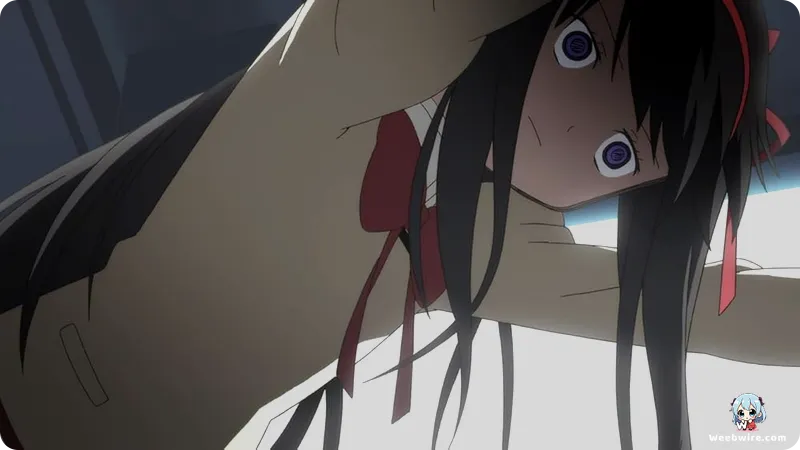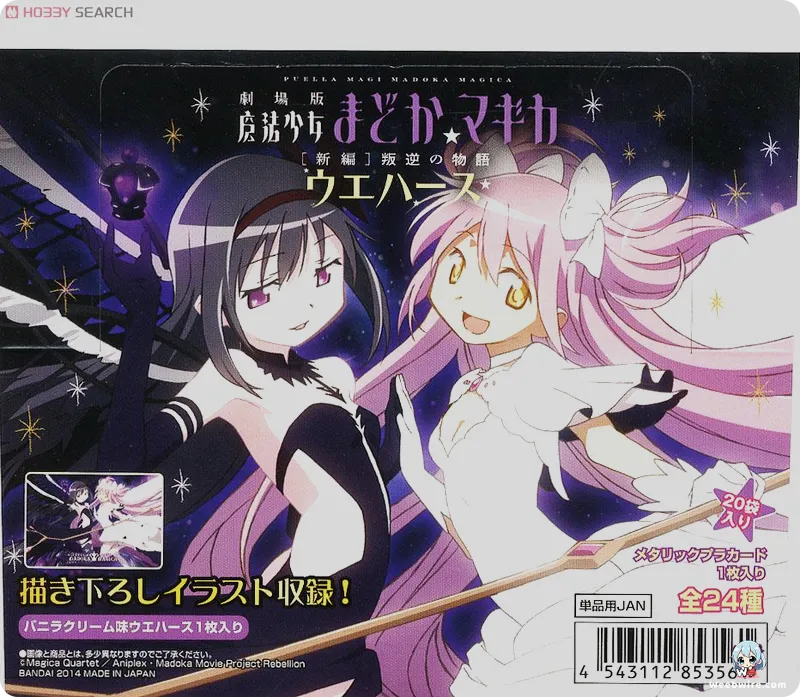Madoka Magica: Rebellion Re-examined – The Film That Challenged Cosmic Order and Redefined a Genre

Released in 2013, Puella Magi Madoka Magica the Movie Part III: Rebellion is not merely a cinematic extension but a monumental and hotly debated entry that profoundly redefines the acclaimed Madoka Magica universe. This film courageously dove into a narrative abyss, shattering audience expectations and fundamentally altering the perception of its beloved characters. Beyond its widely recognized stunning animation and profound psychological depth, Rebellion is a treasure trove of intriguing facts and behind-the-scenes revelations, cementing its status as a standalone masterwork of storytelling audacity. It’s a film that demands repeated viewings, not just for its visual grandeur, but for the intricate layers of meaning embedded within its complex plot and the intense motivations driving its protagonists.
Homura Akemi's Radical Recontextualization
At the heart of Rebellion lies the radical recontextualization of Homura Akemi. Throughout the original TV series, she was portrayed as a tragic figure, tirelessly cycling through timelines to shield Madoka Kaname from a devastating fate. However, Rebellion dramatically subverts this image, unveiling a love so consuming and obsessive that it impels her to defy the very fabric of cosmic order. Her ultimate, often-criticized action, perceived by some as a villainous turn, is rooted in a distorted yet genuine desire to liberate Madoka from the cruel destiny of godhood, a fate Homura believes her initial wish inadvertently brought about. This intricate motivation, a powerful blend of self-sacrificing devotion and profound despair, ignited fervent fan discussions and firmly established Homura as one of anime’s most morally complex and compelling characters. Her choices compel viewers to scrutinize the essence of good and evil, and to ponder whether true salvation can genuinely exist within a system predicated on sacrifice.
The Film's Creative Journey and Script Revisions
The film's creative journey itself was fraught with artistic tension. A well-circulated fact among enthusiasts is that Gen Urobuchi, the original series writer, initially envisioned a different, perhaps more definitive, resolution for Rebellion. His early drafts reportedly leaned into the tragic and nihilistic themes characteristic of the TV series, offering a conclusive end to Homura's predicament. Nevertheless, the final script underwent substantial revisions, shaped by the collective vision of the Magica Quartet, comprising Urobuchi, director Akiyuki Shinbo, character designer Ume Aoki, and producer Atsuhiro Iwakami. This collaborative evolution ultimately yielded the ambiguous and controversial climax where Homura remakes reality, forging a new world where Madoka is unburdened by her divine responsibilities. This behind-the-scenes narrative illuminates the dynamic nature of creative production, offering insights into the compromises and shared decisions that culminate in a final artistic product.
Visual Narrative within Homura’s Witch Labyrinth
The visual narrative within Homura’s Witch Labyrinth, known as “Homulilly,” stands as another testament to the film’s innovative spirit. Studio SHAFT’s signature abstract and surreal aesthetic, a defining characteristic of the Madoka Magica series, is pushed to its absolute limits here. Every detail, from the grotesque, dancing familiars to the bizarre, dreamlike architecture, is meticulously crafted to symbolize Homura’s despair, her fractured memories, and her all-consuming, twisted affection for Madoka. The intricate details and veiled symbolism frequently necessitate multiple viewings and meticulous analysis for audiences to fully comprehend their profound significance and connection to Homura’s tormented past. These sequences transcend mere visual spectacle; they are psychological landscapes that immerse the viewer directly into Homura’s fragmented psyche, rendering her internal struggle palpably real.

Design and Symbolism of Homura’s “Devil” Form
Furthermore, the design and profound symbolism of Homura’s “Devil” form are far from coincidental. This striking transformation transcends a mere aesthetic choice; it embodies her complete defiance of the established cosmic order and her unwavering resolve to shoulder the burden of ultimate evil for Madoka’s well-being. The design itself, with its imposing dark wings, elaborate patterns, and a regal yet ominous aura, starkly contrasts with the traditional innocent aesthetic of magical girls. It visually encapsulates her altered moral compass and her ascent to a power that challenges both divine and demonic forces, establishing her as a singular entity driven by one purpose: Madoka’s happiness, regardless of the cost.
Rebellion's Unprecedented Nature as a Sequel
Rebellion’s unprecedented nature as a sequel cannot be overstated. It boldly defied conventional anime sequel expectations by refusing a neat resolution. Instead, it bravely opened new avenues of interpretation, conflict, and philosophical inquiry, solidifying its place as one of the most widely discussed anime films due to its sheer narrative audacity. It took a cherished, seemingly concluded story and courageously inverted it, compelling fans to re-evaluate everything they presumed to know about the magical girl genre and the Madoka Magica universe. This audacious maneuver cemented the series' reputation for continually pushing boundaries and challenging its audience.
Yuki Kajiura’s Masterful Musical Score
Yuki Kajiura’s masterful musical score for Rebellion is an indispensable element, crucial to its profound psychological resonance. Her compositions span from hauntingly beautiful laments that underscore moments of deep sorrow to intense, action-packed themes that amplify the film’s epic confrontations. Specific tracks, such as “Mada Dame Yo” or “No. 13,” perfectly encapsulate the emotional turmoil and grand scope of the narrative, often conveying more emotional depth than dialogue alone. The strategic incorporation of Latin chants and soaring orchestral pieces elevates the film’s operatic drama, ensuring every emotional beat profoundly resonates with the audience.
Ume Aoki’s Evolving Character Designs
Even Ume Aoki’s original character designs, while retaining their distinctive charm, subtly evolve in Rebellion to mirror the characters’ internal struggles and transformations. Minor alterations in costume, expression, or posture carry significant symbolic weight, particularly for Homura, whose visual metamorphosis from a timid transfer student to a resolute time-traveler and ultimately to the formidable “Devil Homura” is both visually arresting and symbolically rich. The stark contrast between her initial meekness and her later assertive, almost antagonistic, appearance serves as a powerful testament to visual storytelling’s capacity to convey profound character development.
Controversial Conclusion and Enduring Legacy
The film’s controversial and ambiguous conclusion has firmly secured its place in anime history, sparking endless debates, intricate analyses, and myriad fan theories regarding its true meaning and potential future. It cemented Madoka Magica as a series unafraid to challenge its audience and push narrative limits, fostering a vibrant and deeply engaged fan community years after its initial release. This enduring legacy testifies to the film’s complex themes, daring narrative choices, and the profound impact it exerted on the magical girl genre. Puella Magi Madoka Magica the Movie Part III: Rebellion is far more than just a film; it is a profound thought experiment, a gripping psychological thriller, and a poignant exploration of love, sacrifice, and the human condition, making it an truly unforgettable cinematic experience.
Credits
Puella Magi Madoka Magica the Movie Part III: Rebellion
Author
Gen Urobuchi
Cover Art
Ume Aoki
Studio
Shaft
Publisher
Aniplex
Producers





